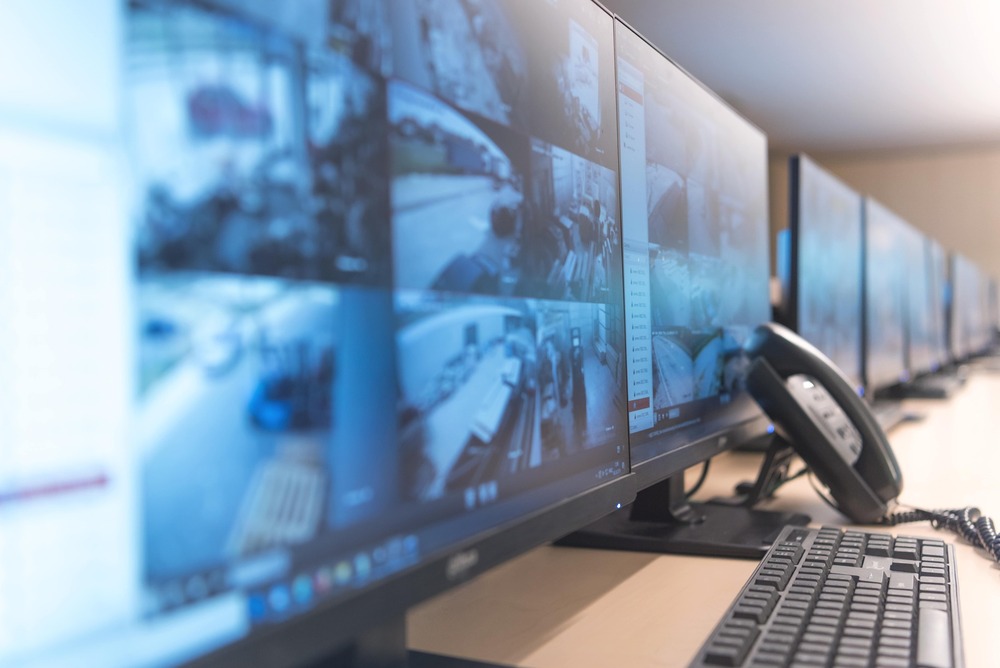
In the industrial sector, ensuring robust security and site safety is crucial for protecting buildings, machinery, operations, and staff.
Often relying on guards to review security camera footage and patrol the site anyone in charge of security should be interested in the benefits of CCTV monitoring for industrial sites.
Why?
CCTV monitoring offers two key benefits:
- Reducing the cost of security compared to employing guards
- Improving threat detection and accuracy
As security threats evolve and the costs of deploying guards rise, the demand for advanced, cost-effective security systems increases.
Before we discuss how these systems improve security at industrial sites, here’s a quick overview of CCTV monitoring.
Table of contents
How does CCTV monitoring work?
CCTV monitoring systems are a bit like having a team of professionals, watching over your site for a fraction of the cost of employing security guards.
There is more about the cost savings these systems offer later in the article…. So, keep reading.
Surveillance cameras are equipped with sensors and detection devices that, upon activation, notify an offsite team for review.
Should a threat be identified, a swift response to the security incident is initiated.
As a result, CCTV monitoring systems couple threat detection and fast responses to security breaches seamlessly.
Related reading: How does CCTV monitoring work?
What are the benefits?
In this section of today’s guide we focus on why anyone in charge of industrial site security, should consider CCTV monitoring a no-brainer.
They are:
- Protecting assets & machinery
- Fast response to security incidents
- Reducing the reliance on security guards
- Detecting and deterring vandalism
Let’s take a look at each.
Protecting assets & machinery
Within industrial sites, expensive machinery and bulk materials, need protection from thieves.
These assets are important for operations and represent significant financial investments.
CCTV monitoring plays a key role in protecting these assets from theft or damage.
Continuous monitored surveillance ensures all activities within the site are watched over 24/7.
As previously noted, when threats are detected and confirmed, a rapid response is initiated.
Fast response to security incidents
CCTV monitoring systems enhance incident response times through immediate alerts and efficient communication with keyholders or the authorities.
This rapid response capability reduces potential damage and ensures that incidents are handled efficiently.
Let’s give this some context.
Related reading: The components of an effective CCTV monitoring system
Example 1 – audio intervention
An intruder approaches your site’s perimeter.
A sensor triggers an alert received by your offsite monitoring team.
The footage is reviewed and the threat is confirmed.
An operative communicates with the intruder via a public address system and warns them their presence is known.
The intruder thinks twice, and leaves.
Danger averted…..
Example 2 – contacting the authorities
A gang of criminals smash their way into your site in an attempt to loot your premises
They are spotted attending entry to your building, and an alert is triggered and received at our monitoring station.
It’s after midnight so it’s fortunate you have deployed thermal cameras to detect threats in low light conditions.
The criminals don’t know they have been spotted.
The authorities arrive, and the criminals are apprehended.
All of this, for a fraction of the cost of employing guards.
In the next section of this guide to the benefits of CCTV monitoring for industrial sites, we focus on how these systems will reduce the cost of security.
Reducing the reliance on security guards
Typically, security guards earn between £25,000-£35,000 per year.
Moreover, it’s worth noting over a 10-year period this equates to £250,000 – £300,000.
This is just their salaries and doesn’t account for other associated costs.
Although external threats such as break-ins and intrusion are real, they are not daily occurrences.
As a result, these figures may leave you wondering whether £250,000 – £300,000 represents a worthwhile investment in security and value for money.
On the other hand, CCTV monitoring provides 24/7 surveillance, accurate detection, fast responses to threats, and total site security.
On average, CCTV monitoring costs around 25% of the cost of deploying guards.
Threats are dealt with in real-time.
Sites are secure.
Let’s pose this question.
If offered the same level of security, would you rather pay £300,000 over 10 years to secure your site, or £75,000?
If it’s the latter, call us now on 0800 689 1835 to talk to a CCTV monitoring specialist.
Detecting and deterring vandalism
Vandalism poses a significant threat to industrial operations.
Historically, CCTV cameras are installed to provide a strong visual deterrent to potential vandals.
Monitored CCTV systems go one step further.
If an intruder is detected, your offsite team can warn the intruder their presence is known via public address systems.
As a result, an intruder has two options.
Firstly, if they have any sense, they will leave the site immediately and therefore, the threat dealt with.
Secondly, they can ignore the warning and will get caught when the authorities arrive.
Benefits of CCTV monitoring for industrial sites – summary
CCTV monitoring offers substantial benefits for industrial sites, including asset protection, theft and vandalism deterrence.
Furthermore, reduced security costs, and enhanced incident response capabilities are all key benefits of these solutions.
If you are keen to understand more, or would like to talk to a specialist, call us now on 0800 689 1835


